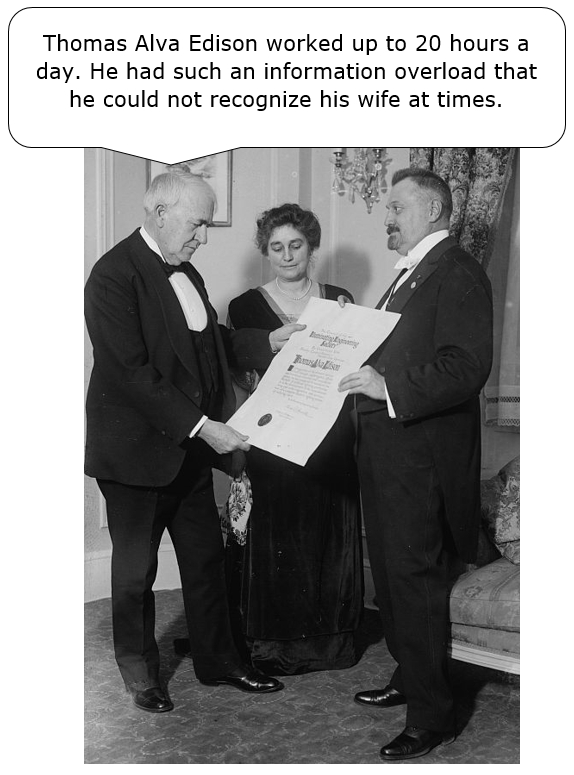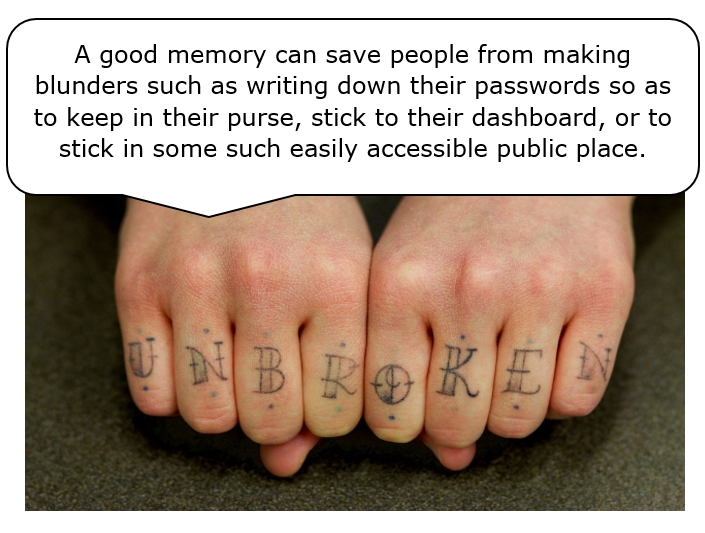The First Step
The first step is to dedicate a diary or notebook for this task. Keeping these notes on your computer would not do at this stage, though after a few months you can do it at your discretion. I recommend a diary or notebook because that is more tuned to the exercises steps you need to take in the first month. An average sized (A5 or slightly larger, but smaller than A4) would do. Also, get a small diary that you need to carry everywhere in your shirt pocket.
Once the two diaries are in place, do the following things faithfully, without ignoring any step:
1. Identify the most important 10 things that you need to remember.
●
The list will vary from person to person so do not ignore it.
●
Do not underestimate the making of this list.
●
I am a writer. I am also very active socially so for me the top ten things would include remembering book names, book summaries, names of people, places, and such items.
●
You decide what is important for you and write them in the big diary starting with the most important one and progress to the least important one among these ten, which would be given the 10th place in the list.
●
Your priorities will shift as you progress with memory training, so keep correction tape handy for easy revision of the list.
2. One the list is final, you need to “tune” your forgetful brain NOT to forget these ten things.
●
Once this training goes on for 30 days, your brain will start getting tuned to selectively remember these items.
●
Once this change begins, you will notice that you are NOW able to do much better at remembering essentials.
●
We are still at a stage where all of this might look foolish to you. You might want to omit this step. Do NOT do it. Each step is here for a purpose.
3. Our next step is to begin training the brain to selectively remember information that belongs to the ten categories that we have chosen.
●
The first step is to give a nudge to the brain to select the information.
●
For this you have to consciously remember the list, or at least first four or five items, and stop at the first occurrence of that item.
●
Names of People is usually the first item on the list of most people.
●
Most people complain that they are unable to remember names, faces, and places.
4. At this stage you might ask whether we will teach you any techniques. Actually, people have invented hundreds of techniques from Mnemonics to Hooks. Some of them are useful while some of them are so difficult that they contribute nothing. They only discourage the potential student from going ahead with memory training.
Techniques are good, but they are good only if selective memory processing is already there. If the process of selective retention of information is not there, no amount of techniques will ever help you to master memory.
●
Thus, in this book our first emphasis will be training your brain to reject what it needs to reject, BUT to stop rejecting information that is vital to you.
●
After that we will train it to retain that information.
●
Once this much is attained, you can choose one or two easy techniques to retain information.
●
Once you master the easy methods, you can decide if you need more advanced techniques.
●
Most people discover that they do not need anything other than a training in selective retention.
●
Others find that they do not need anything other than such training plus a diary.
●
Still others find that some very simple exercise done at convenience, but regularly, for five to ten minutes is a great aid.
●
We will talk about all of them later.
Please remember that at this stage what you need is selective retention of information. No technique can help a brain remember things if it is not trained to retain information.
5. Let us return to remembering names, faces and places.
●
Remembering names, faces, and places is often the top item that people wish to remember.
●
That is because man is a social being.
●
His social interaction, his business, his ability to network, all depends upon remembering names and relations.
●
It is seen that when a person is able to remember names, he finds it easy to remember faces, places, and even events and conversations.
●
Passwords are rising in importance, and one needs to remember unbreakable passwords.
6. Let us return to remembering names, faces, places, passwords.
●
Most people cannot remember these days.
●
Researches have shown we are unable to remember them, in spite of a desire to remember, because of “developed” habits.
●
The developed habit is to throw the baby with the water. As we reject the bulk of the information each day, names also get rejected.
●
We all ask people their name, but our brains have developed the unconscious habit of NOT listening, NOT recording, and NOT remembering.
●
This means that though we ask people their names, with the hope that we will remember it, our brain quickly erases it.
●
In fact, our brain does not even consciously listen to names when people mention their name, though we hear it.
●
Thus, we need to consciously FIGHT against this habit of the brain.
●
The first thing to do is to firmly decide that “now onward when I ask a person his/her name, I will memorize it”.
●
The next thing is to consciously hear the name and immediately repeat it in your mind. The more you can repeat, the better.
●
Then at the first opportunity, write it down in your small diary.
●
Later, write it down in your main diary under the right heading such as barber, grocer, butcher, chemist, etc.
●
Review the main diary at least TWICE a day when you are free, preferably once in the morning and once at night.
●
Each time you meet that person, try to address him/her using their proper name.
●
You will face some difficulty initially, but in about 15 days you will be amazed at how many names you are able to remember and recollect.








